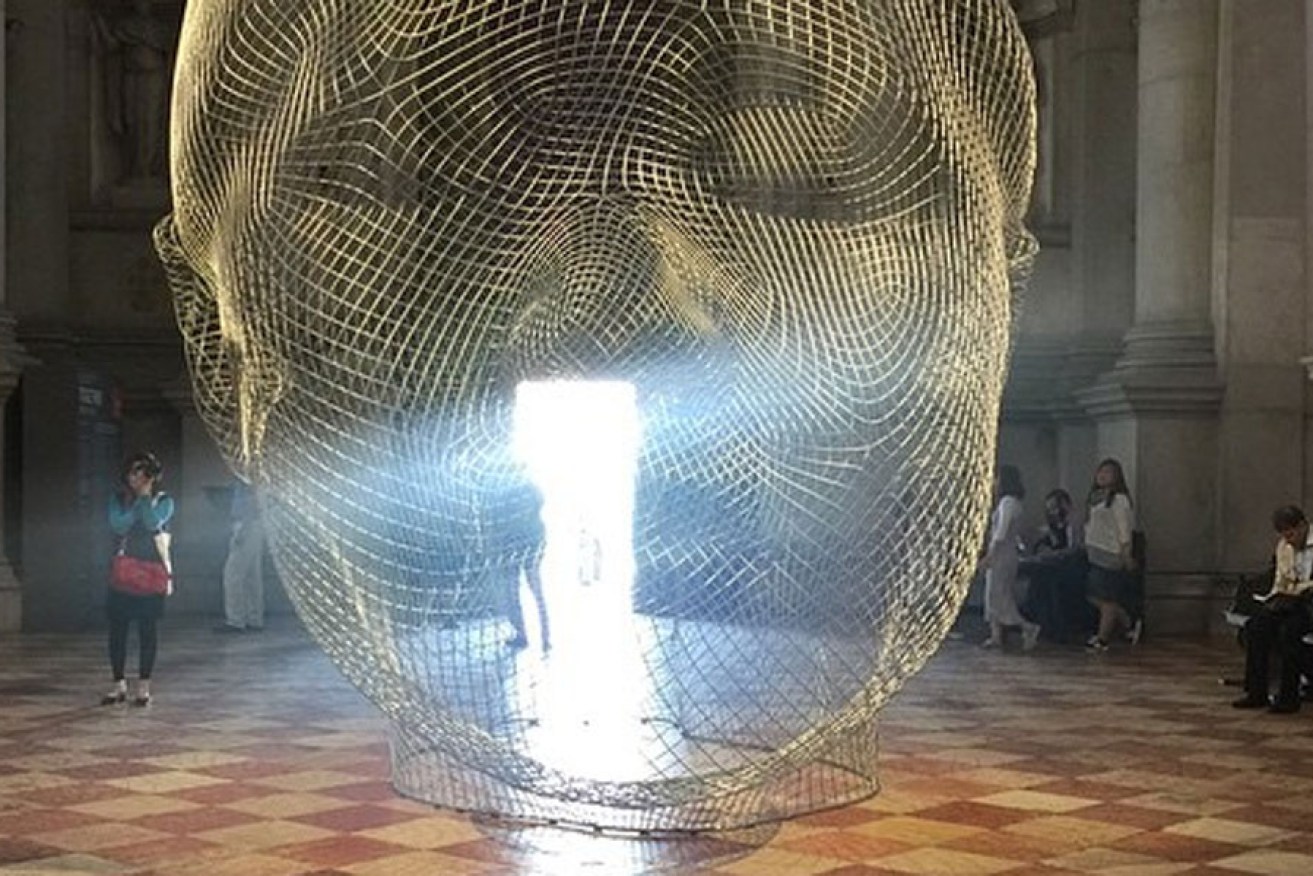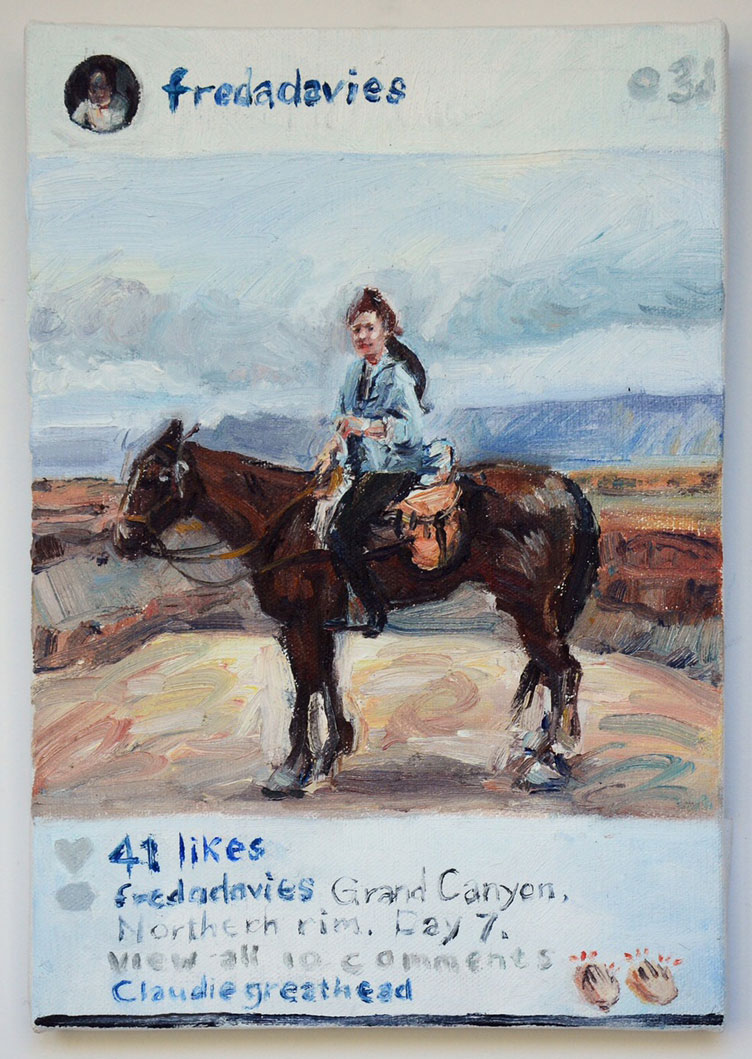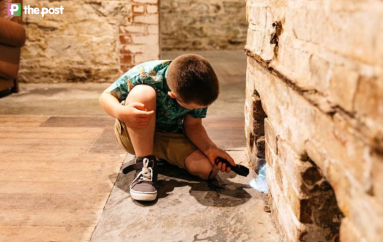How social media is shaping art

An image of a sculpture by Jaume Plensa at the Venice Biennale, uploaded by Nick Mitzevich to Instagram.
Art Gallery of South Australia director Nick Mitzevich ponders the new power of the image rendered through social media and considers its impact on art, artists and museums.
An artist friend of mine has more than 60,000 followers on Instagram. Every hour or so his work is seen by thousands of people – not in a gallery, nor in glossy print reproductions (the dual canons of last century) but via a digital, standard square format Instagram feed on a hand-held device.
His followers, including myself of course, are voyeurs. We choose this twenty-first century hand-held portal as a way into the life of an artist. This fascination with the work and world of the artist is nothing new – it’s the latest manifestation of our cultural obsession with artists, one that began in sixteenth century Italy when Vasari published his lives of artists.
But Instagram offers more than voyeurism – it offers us a connection with each other and a chance to share the creative stage. A single user can post images of themselves making art – themselves in the studio or their creative output. But they can also turn the very experience of viewing a work of art into their own work of art. Via the art of Instagram, we can all be artists. We can all achieve at least our 15 minutes of fame.
What would Andy Warhol have thought of it? In many ways his addiction to the polaroid photograph prefigures our own obsession with Instagram. Described as the world’s first Instagram account, Warhol’s archive of instant images span the late 1950s until his death in 1987. How he would have loved Instagram!
Not only are we all artists on Instagram, we are all curators. This performative dimension involves the careful selection, presentation and sharing of visual content to a specific audience. But has Instagram become more interesting than art?
We know from our visitors to the Art Gallery of South Australia that technology has certainly made art more interesting. Stroll through the permanent collection galleries any day or hour and you’ll see people using their phones and tablets as interlocutors and companions. Such devices help them not only ‘see’ the work but provide an instant community with whom to share the experience.

Archer Davies, Message from the Grand Cannon 2015, oil on canvas. Image courtesy artist and Jan Manton Art.
Social media has provided us with a new metrics – a currency of likes and shares. What can these tell us about art and audiences? The Instagram posts that receive the most likes are those where the image speaks with the greatest clarity and purpose. And yet the best posts aren’t always examples of the best art. In this truly democratic system the success of an image can’t be known until it’s posted, and the ingredients of success largely remain a mystery.
This new-found reality presents a conundrum and possibly even a cause for celebration for art museums. Is it possible that our recently announced attendance figures (780,000 people with a 12 per cent increase on last year) are but a fraction of those who have experienced the work of artists via social media? What does this sharing of visual content digitally really mean for art, artists and museums?
Like the museum, Instagram offers a space where people can stop and look – a meditative modality and one that is very different to, say, Twitter, which has become a largely politicised and vituperative platform.
Artists will continue to make memorable images. One could argue that in this age of digital democratisation and aestheticisation of the image, the singular voice and vision of the artist is more important than ever.
Take the example of Adelaide-based artist Peter Drew whose public art interventions (“Real Australians Say Welcome” and most recently “C’mon Aussie C’mon”) extend their reach considerably via social media. While still adhering to the analogue power of the street poster (Drew’s posters can be seen from Perth to Launceston via Alice Springs), Drew also leverages his work on social media.
Social media platforms including Instagram can amplify the relevance of art and extend the experience offered in art museums.
Malraux’s ‘museum without walls’ mentioned in my very first InDaily opinion piece has become the miniature hand-held museum.
Rather than seeing technology as supplanting the analogue era, technology has a key role to play in amplifying art’s relevance and reach. So get Instagramming!
Nick Mitzevich is the director of the Art Gallery of South Australia. He is a regular contributor to InDaily.
Follow him on Instagram – @nick_mitzevich




